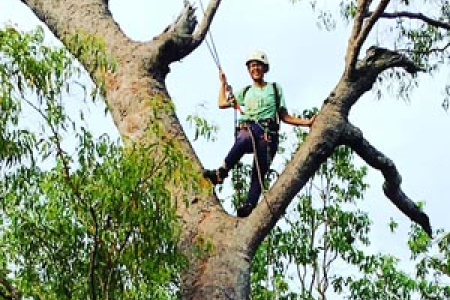NT mammal decline fires up research
A Charles Darwin University researcher is scaling the heights of a remote Northern Territory island to investigate whether modern fire regimes are causing a housing crisis among furry tree-dwellers.
PhD candidate Cara Penton has climbed 105 trees and measured more than 300 hollows on Melville Island, north of Darwin, amid concerns that frequent and intense late dry season burns are wiping out the homes of small native mammals.
She said six of the nine small mammal species recognised as declining in the NT were arboreal, using tree hollows for denning and nesting.
“Something is wrong with the broader ecosystem if these species are declining,” Cara said. “They should be less susceptible to decline because they live in trees, sheltered from predators and extreme weather.
“Fewer hollows result in arboreal mammals becoming highly competitive, resulting in more exposure to predators and environmental extremes, which leads to fewer breeding opportunities.”
The research focuses on tracking three native species: the threatened black-footed tree-rat, the threatened brush-tailed rabbit-rat, and the northern brushtail possum, which is in decline.
All three species were once wide-spread throughout Northern Australia, but are now only found in isolated areas, such as the tropical savannas of the Cobourg Peninsula, the Tiwi Islands and Groote Eylandt.
In the next phase of the project radio collars will be fitted to more than 10 individuals of each species to monitor behaviour and movement.
“By tracking animals to their dens we will be able to determine what types of hollows they use in the landscape,” Cara said. “We will also climb the trees to record hollow attributes and place cameras in the trees to monitor the species’ use of hollows.”
Cara said that with 40 per cent of vertebrates in the Northern Territory using hollows to some degree it was vital to find out more about hollow ecology to improve biodiversity management.
The research is funded by an Australian Research Council grant and the Western Australia Parks and Wildlife Service.
